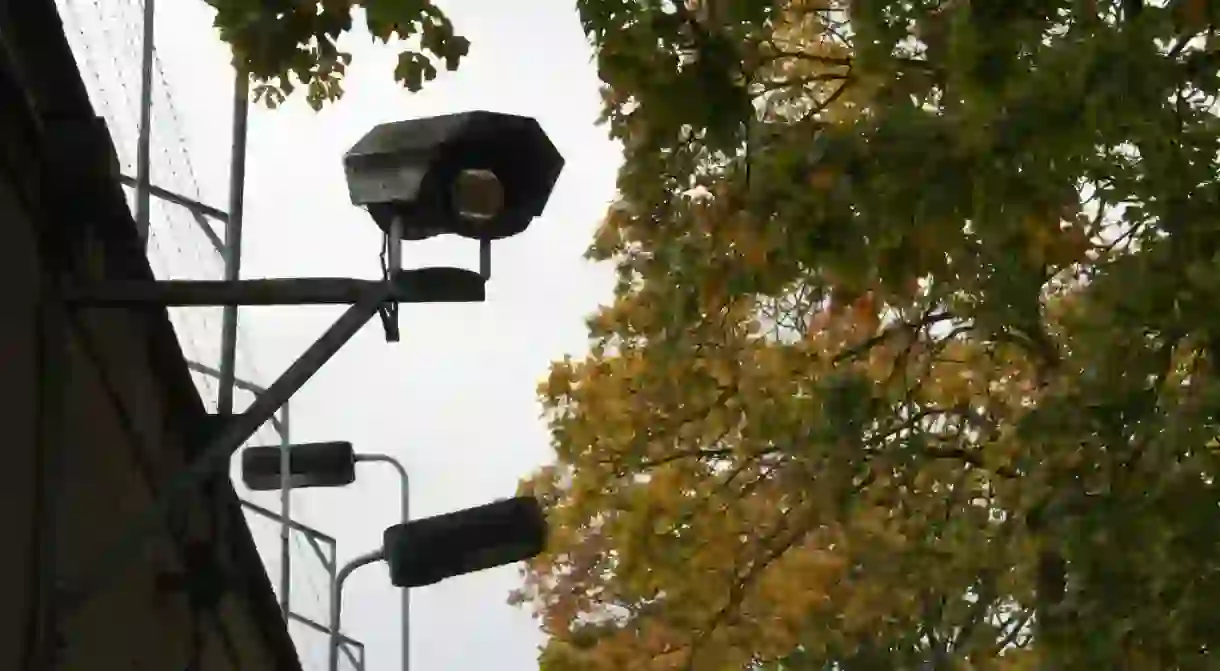Germany's Secret Police: A Glimpse of Berlin Under Stasi Rule

Stasi is the short form of the Staatssicherheit, the national intelligence arm of the German Democratic Republic (GDR). Germany’s secret Cold War police, which governed East Berlin when the capital was divided into East and West, became notorious for their invasive, paranoid surveillance tactics, socialist ideology and strict rule. These photographs from behind Germany’s Iron Curtain offer an insight into daily life in East Berlin, in stark contrast to the freedoms afforded in the West of the city.
The Stasi Headquarters in East Berlin. Today, the HQ is a museum where people can take guided tours to explore the Stasi mindset and aesthetic.

Under the sharp eyes of the Communist police, East German workers erect a concrete wall at the border near Potzdamer Platz.

A woman is photographed in a deserted street in East Berlin, where portraits of Communist leaders including Mao Tse Tung and Ho Chi Minh are hanging.

A photograph of Otto-Braun-Strasse near Alexanderplatz. The buildings in the picture show typical Communist architecture. The street was named after Otto Braun, a German military advisor to Communist China. The street cars were also a feature of East Berlin, having been phased out in the West in 1954.

Berlin’s most iconic structure, the TV Tower (Fernsehturm), seen through Brandenburg Gate in East Berlin.

This photo from 1977 shows the Palace of the Republic in 1977. The cars in the parking lot are Trabants, the preferred vehicle of the East German state.

Cars leaving East Berlin are stopped and searched by East German guards at the famous border point at Checkpoint Charlie.

This photo clearly shows how the Stasi would spy on people, not only in the streets, but also in their homes.

An image of a Stasi kitchen.

Creator Gerhard Behrendt is pictured with the Sandmännchen, a popular character from a German children’s bedtime television programme that was recorded in East Berlin.

The Volksbühne theatre on Rosa-Luxemburg-Platz.

A former Geisterbahnhof (‘ghost station’) in East Berlin. This was the name given to dimly lit and heavily guarded stations where underground train routes would transport people from West Berlin and through East Berlin. The Unter Den Linden S-Bahn stop is now called Brandenburger Tor.

Photos of people in punk clothing who have been arrested by the Stasi police.

The Fall of the Berlin Wall in 1989 and the dissolution of the divided GDR and Stasi police.














